HSP HISTORY Blog |
Interesting Frederick, Maryland tidbits and musings .
|
 Bill and Melinda Gates Bill and Melinda Gates As the decade of the 1990’s came to a close, cable television provided more opportunities for the United Way message to be delivered to the viewing public. This added to spots run on commercial television, and included high visibility through public service announcement requirements. United Way commercials were a known commodity, and served as an attractive alternative for cable networks and local insertion commercial operators. Meanwhile, the unique partnership between the United Way and the NFL celebrated its 25th anniversary in 1998. United Way was sharing their message with 110 million viewers during football season. Up to this time, over 950 different commercial spots had aired since 1973. The growth of the Internet contributed to globalization during the decade, which allowed faster communication among people around the world. Personal computers were a Godsend and allowed the United Way to further attract donations and disseminate information out to potential donors. In fact, the opportunity was now afforded to allow users to make donations via the computer. Meanwhile, an expert in the computing field would make a very generous donation to the organization in 1999. Bill and Melinda Gates gave $10.5 million to support vital United Way programs and services in an effort to strengthen the United Way system. In time this would become known as United Way Worldwide. 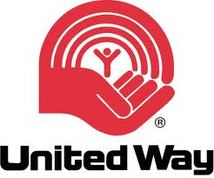 It was a time of reinvention and change for the United Way on both the national and local levels, as it entered into the new millennium. In 2000, many local chapters embarked on implementing a national brand management strategy designed to differentiate the United Way brand, and the larger system model. The strategy helped to reposition United Way as more than a "fundraiser," but instead, one of the country's leading "community impact" organization. The goal sought after was the emergence of a community-based worldwide movement. To do so, United Way organizations across the planet would bring together financial resources, volunteers, human service agencies and community partners to make the greatest impact. This was a fledgling idea at the time, but today the United Way system constitutes approximately 1,800 community-based United Way organizations. Each is independent like United Way of Frederick County, and separately incorporated and governed by a local volunteer board of directors. These organizations address the most critical issues and mobilize resources beyond pledged funds through annual campaigns and other fund-raising efforts.  Through a “united” nationwide effort, United Way and its partners, the Alliance of Information and Referral Systems, successfully petitioned the Federal Communications Commission to designate "211" for health and human services information and referral. Originally created by United Way of Atlanta, 211 is an easy-to-remember and universally recognizable telephone number that makes a critical connection between individuals and families in need and the appropriate community-based organizations and government agencies. As far as the United Way of Frederick County was concerned, the seventh decade of the united giving model would fast re-affirm the great need for the organization here, while challenging local leaders to re-evaluate whether we are prepared for the worst, or doing our best for the community with monies annually raised. At the helm of the local organization in 1999 was Dr. Ann L. Boyd, a biology teacher at Hood College. Dr. Boyd also held the distinction of being the third female to serve in the position of United Way's president. She would also be the last to hold the title, male or female, as a title change was on the horizon. Dr. Boyd was assisted by campaign chairman Peter Plamondon, Jr. of Roy Rogers Industries. Plamondon would take the reins the following year as Chairman of the Board (2000), the position formerly referred to as president. He was assisted by campaign chairman Charles C. Clark, executive director of Buckingham’s Choice Retirement Community. Frederick County’s population was 190,000 in 2000, and ironically, 190 local companies, corporations and organizations were involved that year in helping 24 partner agencies through a campaign goal set at $2 million. ($1,468,850 was raised). In March 2001, Michael Singer was hired to fill the executive director position which had been vacated by Susie Loveland a year before. Former Executive Director Nancy Crum (1989-1996) had been coaxed out of retirement to serve as interim director while the Board searched for a suitable replacement. Singer, formerly the vice president of development for the United Way of Greater Chattanooga (Tennessee), brought 11 years of non-profit experience to the position. Job duties were tweaked a bit and a new title came about as Singer would become the president and chief executive officer of the UWFC. A new marketing theme was rolled out with help from local advertising firm Ann Burnside, Love and Associates. Residents were asked to consider their United Way participation as a multivitamin for the community—one that supplies the nutrients for the survival of several local non-profit organizations. 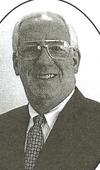 Charlie G. Clark Charlie G. Clark The Calm Before the Storm The 2001 campaign kicked off on Friday, September 7th with a goal of $1.6 million. Just four short days later, the world, as we knew it, changed forever with the deadliest attack ever experienced on United States soil. Terrorists hijacked jet airliners and flew them into New York’s World Trade Center, and the Pentagon in Washington, DC. Thus began “The War on Terror.” The United Way of Frederick County responded by taking part in a new fund called The September 11th Fund, coordinated by the United Way of New York City. This was a national effort to raise money for people affected by the disaster in all parts of the United States. UWFC Chairman Charles G. Clark wrote a local letter to the editor that explained the fund, and reaffirmed the United Way’s role in helping to help provide emergency services through funding member agencies. In this case, two were at the forefront of the recovery efforts—the American Red Cross and the Salvation Army. Nationwide, a renewed sense of charity was awakened by this horrific event and the warfare to follow, harkening back to the World War eras. Cooperative efforts eventually sparked federated giving in Frederick back in 1938 with the introduction of the Community Chest. As America moved forward from September 11th, 2001, additional tragic events would occur three and four years later in the form of natural forces. These included a series of devastating hurricanes in Florida in late summer/fall of 2004, and 2005 brought the legendary Hurricanes Wilma and Katrina. Frederick was spared, but thanks to advancements in media technology including the internet, UWFC leadership members, campaign volunteers and donors had a front row seat to watch events play out at real time. Many received the wake-up call of “What if this had happened here in our community?” Well aware of this fact were UWFC chairmen serving during the early 2000s. These men were executives in the financial world: CPA Daniel W. Chaney of RSM McGladrey (2002), CPA Robert L. Tuggle of Willard Automotive Group(2003) and Senior VP Frederick S. Genau of Farmers & Mechanics Bank (2004).  The United Way throughout Florida led the response and recovery efforts by identifying the most serious needs in devastated communities. The Florida 2-1-1 Network responded to thousands of telephone calls directing victims to services such as disaster preparedness, shelters, food and water assistance, response activities, post disaster assistance, and recovery information. Local 2-1-1 operators also matched volunteers with opportunities to give help in affected communities. In 2005, the United Way of America updated its Standards of Excellence. First adopted in 1973 and last updated in 1988, the Standards—which provide a comprehensive description of benchmark standards and best practices—reflect the organization’s strategic shift from its traditional role as fundraiser to the new mission focus of identifying and addressing the long-term needs of communities. In his “end of year report,” 2004 UWFC Campaign Chair Theodore M. "Ted" Luck (Frederick County Public Schools) said:  Ted Luck Ted Luck “Disasters don’t just happen to other people in faraway places. We have “everyday disasters” right here at home that affect your friends, your neighbors—maybe even your family. Through the 2004 UWFC Campaign, together we were able to raise $1,531,050 to ensure that basic, local services will be there for all of us—whenever we need them.” Luck's words of wisdom rang true throughout his presidential year of 2005. Over 46,000 residents, from children to seniors, were provided critical resources through United Way’s support of local organizations capable of providing emergency assistance programs such as crisis hotlines, disaster relief, counseling and shelter from abuse and homelessness. A Re-Focus on Mission In 2005-2006, time, energy and resources were invested to impact the Frederick community by continuing to focus on four distinct areas through its 22 partner agencies: 1.)Support programs that assist children and families 2.)Provide emergency services 3.)Offer health education 4.)Serve those with disabilities In the 2005 campaign, the UWFC raised $1.5 million under Board Chairman Ted Luck and Campaign Chair Eric Struntz (VP Bank of America). One year later, the annual appeal would raise $1.7 million under Struntz’ leadership. Michael Singer departed the organization and in May 2007. Board Chairman Eric Struntz took on an even greater role to help the organization during a time of transition. Reflecting back on this period, Struntz said: “The agency went through a fair amount of executive turnover during one phase of my board tenure. In particular, the year that I was board president we were without a CEO for 9 months or so, and I informally doubled as the “interim” CEO. I thought I knew a fair amount about the agency’s operations, but I had no idea all of the “in’s and out’s” until I experienced it firsthand. Fortunately the staff was fantastic, and they were the ones that fully kept things afloat.”  Bill Kantz, the new President and CEO of the United Way of Frederick County Bill Kantz, the new President and CEO of the United Way of Frederick County A gentleman named Bill Kantz would become the new president and chief executive officer at United Way of Frederick County. Kantz recently moved back to the continental United States from the U.S. Virgin Islands armed with 12 years of United Way experience. He previously served as the CEO for United Way organizations stateside as well in Waterloo, Iowa, Danville, Va., and Washington, D.C. In a newspaper article introducing the new United Way administrator to the Frederick community, Kantz spoke of the challenges many traditional charitable organizations were facing at the time. He noted competition for donations had increased because the number of nonprofit organizations seeking them has grown tremendously. “United Way organizations have to appeal to a wider scope of donors,” Kantz said. “The average donor is older than 40, but donors need to reflect community demographics. So do volunteers. Volunteers at many well-known organizations usually are older white males, he said, but it is important that traditional charities be relevant to a diverse group. People need to not just view United Way as a fundraising organization, but see how it is a great way to invest in their community.”  The 70th anniversary of the UWFC was upcoming in spring 2008. An unwelcome guest was a severe global financial crisis. The economic growth of the 2000s had considerable social, environmental and mass extinction consequences including a heightened demand for diminishing energy resources. The period from 2007-2008 is considered by many economists to have been the worst financial crisis since the Great Depression of the 1930s. Board leadership through this tough time was appropriate in the form of chairpersons Frederick L. Ridgeway, Jr. (an investor with Smith-Barney) and Jayne Bongard (VP with M&T Bank).  Under President Bill Kantz, and a re-invigorated Board of Directors, the revamped mission of the UWFC had never echoed louder: “To unite local resources in an effort to provide the most effective response to community issues in Frederick County.” Meanwhile, the organization’s Vision statement was “To build a community where everyone has the aspirations, resources and opportunities to reach their potential.” The major ideological change featured a shift from simply allocating funds for member agencies to looking at community impact and identifying specific areas of need and monetary distribution to those that could best address these needs. This controversial move certainly wasn’t without pain as some agencies, who had grown dependent on the United Way of Frederick County, lost their major funding streams. The Community Impact funding model had been initiated through United Way of America in the mid-2000s. Although the preliminary planning started under Mike Singer, Bill Kantz had the opportunity to introduce this concept to Frederick County. Described as “a high paced, energetic guy with a get things done personality,” Kantz had witnessed the power of focused charitable resource allocation during his time working for United Way in the Caribbean. The caring power of communities was being harnessed and mobilized to do greater good. United Way organizations now had the power to bring communities together in an effort to focus on the most important health and social service needs by building partnerships and leveraging resources to make a measurable difference. Focus areas were being identified at the local level and varied from place to place. With United Way Worldwide in place, a movement was now in motion to make a measurable impact on the global community as well. United Way Worldwide continues to invest in the programs and services that strengthen the ability of local United Way organizations to identify and build a coalition around a set of community priorities and measure success based on community impact. 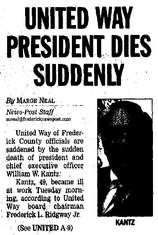 Frederick News-Post (Feb 20, 2008) Frederick News-Post (Feb 20, 2008) Bill Kantz had an major task to deliver upon. It would be achieved, but sadly, the UWFC president and CEO would not live to see his vision come to fruition. Kantz died suddenly on the morning of February 19th, 2008. Shortly after coming into the office for a regular workday. He collapsed and was taken to nearby Frederick Memorial Hospital and died shortly thereafter. He was only 49 years-old. His premature death shocked grief-stricken colleagues. Board Chairman Fred Ridgeway was interviewed by the Frederick News-Post later in the day, saying: “He brought a lot of energy to us. He was getting a lot of things done for us.”  Eric J. Struntz Eric J. Struntz Former Chairperson and interim president Eric J. Struntz was quite active in helping the organization make this phenomenal change. He reflected: "The work to transition from an allocations/designations model to a “community impact” model began under Mike Singer, and each subsequent CEO helped further the cause of bringing the agency to where it is today. In many ways the overall premise remains the same – United Way raises money on behalf of non-profit agencies in Frederick County, and pools those dollars together to help make a bigger impact than would have happened otherwise. However, as donors now have more and more options of who and how to give, the competition for those “dollars” is greater, and accountability for the impact the funds are having is of even higher importance. In my view, the shift to a Community Impact model was essential to the survivability of UWFC." At this juncture, a former Frederick County delegate to the Maryland General Assembly, Rick Weldon, would step in as UWFC CEO/President. He picked up the community impact torch and moved forward in the direction that his predecessor had mapped out. Looking back, he would add: “I’d be dishonest if I suggested the transition from a “council of community partners” to the community impact model was easy, though. It was challenging to “sell” nonprofit CEO’s, who had grown accustomed to a dependable annual allocation of resources, to the idea of targeted grants in the areas chosen by UWFC as community priorities. To their credit, all of them have adapted their expectations, and our visionary UFWC leaders have proven the value of the community impact model to help us address our most pressing problems in the areas of income, education and health.” Eric Struntz added: “Notwithstanding the above change, continuing to have key relationships with a core group of agencies/partners remained critically important. When UWFC first started to move towards this newer operating model, there was a fair amount of trepidation amongst the agencies that UWFC had traditionally partnered with. The transition involved a significant amount of communication amongst all stakeholders, and I’d like to think that each of the CEOs at the time did a great job of helping to educate the community on the changes that were being made. And it’s important to note, most of the agencies that UWFC partners with today are decades long partners who we have worked with for many, many years. Sudden Community Impact One of the finest innovative ideas of the period involved a new partnership between the United Way of Frederick County and one of its greatest workplace campaign partners—Frederick County Public Schools. Entitled “Stuff the Bus,” this activity involved volunteers and participating donors actually filling a school bus with much-needed school supplies. The inaugural event occurred September 11th, 2009. Related educational-oriented initiatives to aid school children in succeeding in school soon followed. These included a collaborative effort with Frederick Community College involving a poverty simulation, and a community-wide backpack drive.  Josh Pedersen Josh Pedersen Construction Law Attorney David C. Weaver and M&T Bank VP Keith Grunow would follow Eric Struntz and Jayne Bongard as board chairpersons. All four individuals would play a role in having to hire yet another CEO/President after Rick Weldon left the organization after being offered an opportunity with the Mayor’s Office of the City of Frederick. In early 2010, the Board offered the position to a native from Utah named Josh Pedersen. Pedersen was an appealing candidate for the job because of a proven track record in the “community impact” arena. Once in place here in Frederick, he told an FNP reporter: “The United Way is no longer a fundraising organization. It has become a community change organization. We are not just looking at production outputs, but we’re looking at the long term impact on our community.” Pedersen had great prior experience in the non-profit world and had experience with United Way organization to boot. The Frederick Chapter now focused on helping people in three major areas in its work: education, health care and financial stability. Josh Pedersen would nurture the community impact model over the next 6 years before his departure in March 2016 to take a position at the nonprofit 2-1-1 Maryland Inc. The midpoint of Pedersen’s tenure marked the 75th anniversary of the organization in April, 2013. By this time, a Community Impact Grants and community Needs Grants programs had been instituted. Several programs were started to address the root causes of academic achievement, financial stability and healthy lives. These included: Born Learning, FamilyWize, Prescription Discount, One Million Mentors, Student United Way, and United Way Summer Serve. 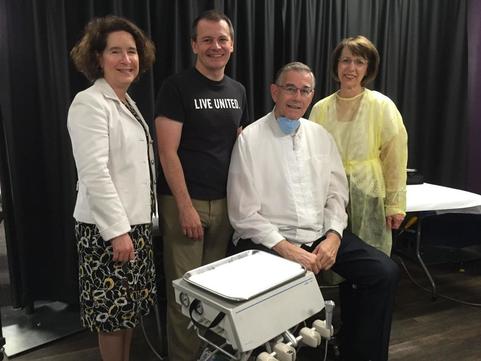 Pedersen found that “one of the coolest things” about working in the Frederick County community was “people’s commitment to solve problems and willingness to make a difference." “It’s not about one donor or one nonprofit or one person,” he said. “It’s all of us united, coming together to solve a problem.” A huge accomplishment for the organization during Petersen’s tenure as CEO was the effort to help working families become more financially stable. Board member Eric Struntz said, “While the organization provides assistance for immediate needs, United Way has also aimed to 'not just put a Band-Aid on the problem,' but also help families reach economic independence. There’s a balance required between helping to meet immediate financial needs, and helping to fix the underlying problems so that those needs don’t happen to begin with. While both are important, “helping families become financially stable and independent” in my view is most critical. As a donor, I would rather give money to fix problems than provide “band aid” solutions, so focusing efforts on the underlying causes of social issues is incredibly important."  Pedersen, his board, sponsors and volunteers were very successful in building partnerships with different nonprofits, while maintaining existing relationships. This was an important part of the organization’s work during his tenure. United Way of Frederick County recognized that issues are better tackled with the power of multiple groups. This was so important as the community continued to grow. In 2012, the UWFC annual report showed that $126,711 was invested in the area of Education, in which 1,936 persons were served. This ranged from funding put toward youth mentoring and afterschool opportunities to family coaching and Stuff the Bus. In respect to the second pillar of Income, UWFC provided an investment of $73,895 to promote financial stability and independence. This served 1,108 people receiving help through programs such as Information and Referral Services, Neighborhood Revitalization, Homebuyers Education, Financial Literacy and Income Volunteer Training. The third main focus are is Health, and partners ranging from Gale Recovery, Families Plus, Mission of Mercy, Frederick County Hepatitis Clinic and Villa Maria received a total investment of $69,300 in which 1,245 persons were served. Josh Petersen and his Board of Directors also learned a valuable lesson relating to a decrease in workplace giving by leading companies. This was not going to be sufficient to meet fundraising needs. A crippling commercial recession in the rear view mirror, Frederick based companies and businesses are more transient than ever before. Eric Struntz reflects: “We already started to see pullback of some of the larger companies in the area. CitiMortgage, Chase, Bechtel and a number of others had all significantly reduced their presence in Frederick County. The county became much more “commuter-based” as well, which made reaching those folks even more of a challenge. And with those changes, it became tougher to target individual donors for gifts. So work began to increase foundation giving, corporate sponsorship, large individual gifts, etc. as a way to help offset workplace turnover. While employee giving still remains an important component of the overall fundraising effort, the recognition of a need to diversify funding sources was very important”. Jeffrey K. Fraley (1st Vice-Chair-M&T Bank) led the local chapter as Chairman of the Board from mid 2012-mid 2013. He was followed by Jim Racheff (CEO-Data Management Services, Inc.), who would serve two consecutive terms. Under Racheff, The United Way of Frederick County experienced another major milestone. This was the 75th anniversary of "united giving" here in Frederick County. This monumental achievement came on the heels of another as Forbes Magazine ranked United Way as one of the most efficient charities in the nation, calling the non-profit and "all-star charity." United Way of Frederick County had certainly lived up to this all-star billing. Since the inaugural campaign drive of May, 1938, UWFC had raised more than 44,000,000 over its 75-year history. Best of all, all $44,000,000 was invested in programs and services here in Frederick County.  Out of that goal came the Prosperity Center which opened in 2014. This collaborative effort with the Frederick Housing Authority and the Frederick County Financial Literacy Coalition moved the offices of the United Way of Frederick County from their longtime home in the Federated Charities Building on S. Market Street to the 600 block of N. Market Street, within the Bernard W. Brown Community Center. The joint initiative was designed to help provide resources for the “working poor” of Frederick County, estimated at 16,000. Here, residents can find services such as getting their tax returns done free of charge, credit counseling, asset building tools and budget coaching.  Ken Oldham Ken Oldham Who is this Alice? Evolution of staff throughout the years has been important as well. Traditionally staffing requirements focused on fundraising, finance, and administration. Today, those roles remain critical, but have also expanded to include focus on both community impact and community engagement. On August 1st, 2016, Ken Oldham took over as CEO and President of United Way of Frederick County. Boasting an extensive background in non-profit management, strategic planning, and community outreach, he came to Frederick after serving for over a decade as President of the National Philharmonic at Strathmore in Bethesda, Maryland. In addition, Oldham has several years of experience in helping to develop non-profit organizations. He is a Certified Fund Raising Executive (CFRE) and a current member of Western Maryland’s Chapter of the Association of Fundraising Professionals. In recognition of his professional excellence, he received the prestigious Alumni Achievement Award and the Montgomery County Executive’s Emerging Leader Award. Ken earned his Bachelor of Science from Frostburg State University, where he serves as Vice President of the FSU Foundation and Chair of the Governance Committee.  Malcolm Furgol Malcolm Furgol A native of Scotland, Malcolm Furgol is the UWFC's Director of Community Impact. He is responsible for the development and execution of strategies related to the long-term community impact goals of the organization, focusing on education, financial stability, and health. He has been part of the organization since December 2013 and is also in charge of planning and implementing our signature United Way activities Furgol served as Membership & Information Manager at The Nonprofit Roundtable of Greater Washington and as Board Chair for the Young Nonprofit Professionals Network of DC (YNPNdc).  Board Chairs Vasquez (left), Stenersen (2nd from left), and Sears (right) with CEO Oldham Board Chairs Vasquez (left), Stenersen (2nd from left), and Sears (right) with CEO Oldham The Annual Leadership Breakfast in fall continues to put the campaign drives in motion, and springtime brings recognition to leading community volunteers and organizations supporting the United Way through the Bravo! Awards event. Roger Stenersen (Director of Hood College's Educational Leadership program)served two terms as UWFC's Board Chairman (mid 2014-mid 2016) and was followed by James Sears (President of Maryland Operations-First Energy Corporation) and Danny Vasquez (GM-Plamondon Hospitality Partners).
At this important milestone, it’s so important to see what the Frederick County Chamber of Commerce thinks about the organization—one it formed back in 1938. As a catalyst for enhancing the economic vibrancy of the Frederick community, the Chamber has provided the UWFC team with tools to be better professionals through a large spectrum of training opportunities. Fine workers and keen Board members usually can have skills sharpened at the Chamber, not to mention the leadership programs offered. Additionally, the Chamber links UWFC with similar organizations so networking and problem-solving even between peers can become more commonplace.  UWFC CEO Trio featuring Ken Oldham (left), Rick Weldon (center) and Josh Pedersen (right) UWFC CEO Trio featuring Ken Oldham (left), Rick Weldon (center) and Josh Pedersen (right) Rick Weldon, a Delaware native, first came to Frederick in 1985 and has been involved with the United Way of Frederick County as a donor, volunteer and served as President and CEO from 2008-2009. Today, Weldon serves as Vice-President of the Frederick County Chamber of Commerce and shares a unique perspective on the UWFC’s impact back on the Chamber, itself—the organization responsible for its establishment here in Frederick back in 1938:Rick Weldon, a Delaware native, first came to Frederick in 1985 and has been involved with the United Way of Frederick County as a donor, volunteer and served as President and CEO from 2008-2009. Today, Weldon serves as Vice-President of the Frederick County Chamber of Commerce and shares a unique perspective on the UWFC’s impact back on the Chamber, itself—the organization responsible for its establishment here in Frederick back in 1938: From its earliest days, UWFC has played an important and lasting role as a part of the Chamber of Commerce. We’ve always had a strong presence of UWFC board members and volunteers also serving on Chamber boards and committees, and they share their concerns and accomplishments with their colleagues in the private sector. The Chamber provides space and support for the Frederick Nonprofit Alliance, a group comprised of CEO’s from many of our leading nonprofit organizations. They share best practices, experiences and resources, all under the umbrella of the Frederick County Chamber. It’s something we’re very proud of! United Way of Frederick County is a powerful representation of the generosity of the people of Frederick County. The ability to focus resources on our most pressing challenges and in support of our most vulnerable populations has always been UWFC’s strength. That was the basis for the original Community Chest investment fund, and continues today as the underlying mission of UWFC. When called, our community always seems to answer! Happy 80th United Way of Frederick County!
0 Comments
Leave a Reply. |
AuthorChris Haugh Archives
February 2024
Categories |
Proudly powered by Weebly
















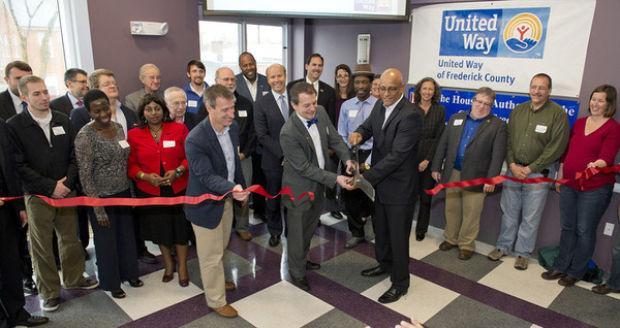
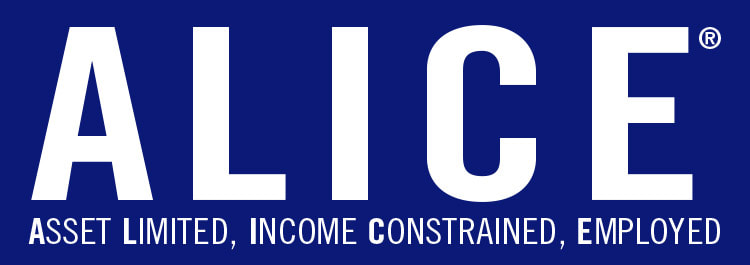


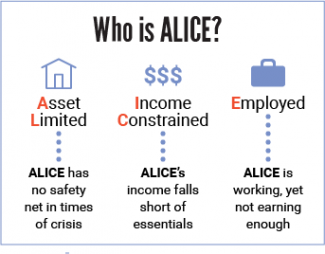

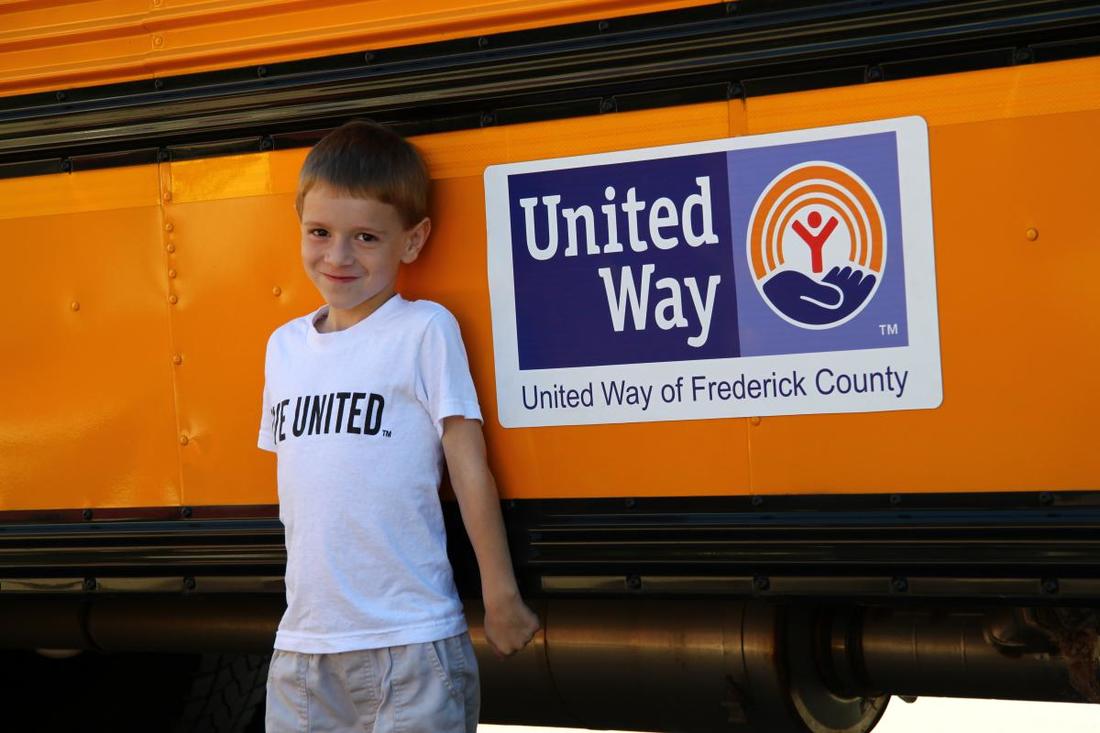


 RSS Feed
RSS Feed